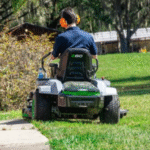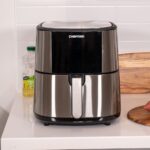Pressure washing is one of the fastest and most satisfying ways to make outdoor spaces look new again. From driveways and decks to siding and patios, blasting away dirt and grime can boost curb appeal and protect surfaces from long-term damage. But how often should you do it—and when’s the best time to tackle the job?
Why Pressure Washing Matters
Outdoor surfaces collect more than just visible dirt. Mold, mildew, algae, and pollutants can build up over time, leading to slippery walkways, faded finishes, or even permanent staining. Regular pressure washing helps maintain the look and safety of your home’s exterior while extending the life of your surfaces.
How Often Should You Pressure Wash?
Driveways and Walkways
- Recommended: Once a year
- Why: Dirt, oil, mold, and tire marks build up over time. Annual cleaning keeps concrete looking bright and helps prevent cracks from grime buildup.
Home Siding (Vinyl, Wood, Brick)
- Recommended: Once a year
- Why: Siding can collect mold, mildew, and dust, especially in shaded or humid areas. Annual washing keeps it looking fresh and protects paint or finishes.
Decks and Patios
- Recommended: Once a year or as needed
- Why: Wood, stone, and composite decks are prone to algae and moss, especially in damp climates. Clean before sealing or staining for better results.
Fencing
- Recommended: Every 1–2 years
- Why: Wood and vinyl fences can discolor or rot if buildup is left untreated. A light pressure wash revives appearance and helps prevent decay.
Outdoor Furniture
- Recommended: As needed, typically twice a season
- Why: Furniture collects pollen, bird droppings, and general grime. Spot-clean in spring and again mid-season for comfort and hygiene.
Garage Doors and Gutters
- Recommended: Once a year
- Why: These areas often get neglected but can collect dirt, cobwebs, and even mold. Cleaning helps with appearance and function.
When’s the Best Time to Pressure Wash?
- Spring is ideal for cleaning off winter grime and preparing outdoor areas for warmer weather
- Fall works well for removing summer buildup and preventing mold during colder, wetter months
- Avoid pressure washing in extreme heat, freezing temperatures, or when rain is expected within 24 hours
Tips for Safe and Effective Pressure Washing
- Use the right pressure setting for each surface to avoid damage
- Always test a small area first before doing a full wash
- Use proper nozzles—narrow tips for tough stains, wider tips for gentler cleaning
- Wear safety goggles and avoid pointing the spray at people, pets, or windows
- Consider eco-friendly cleaners if you’re dealing with mold or grease
Final Thoughts
Pressure washing isn’t something you need to do weekly—but getting on a yearly schedule can dramatically improve your home’s exterior, prevent damage, and make outdoor areas safer and more enjoyable. Whether you DIY with your own machine or hire a pro, knowing when and how often to clean makes all the difference.
Want to explore top-rated pressure washers for all surface types? Check out our latest gear reviews in Outdoor Essentials.








Leave a Reply